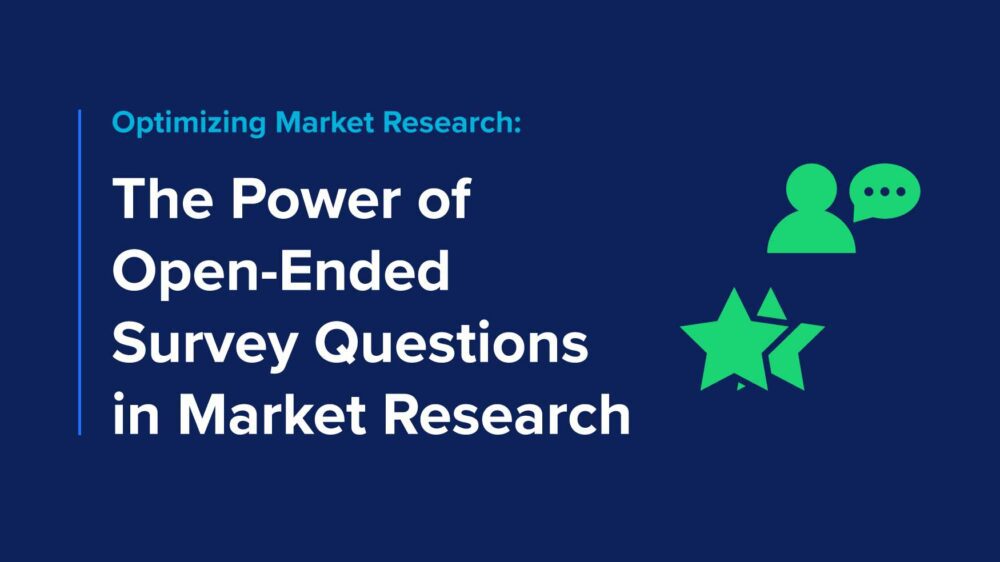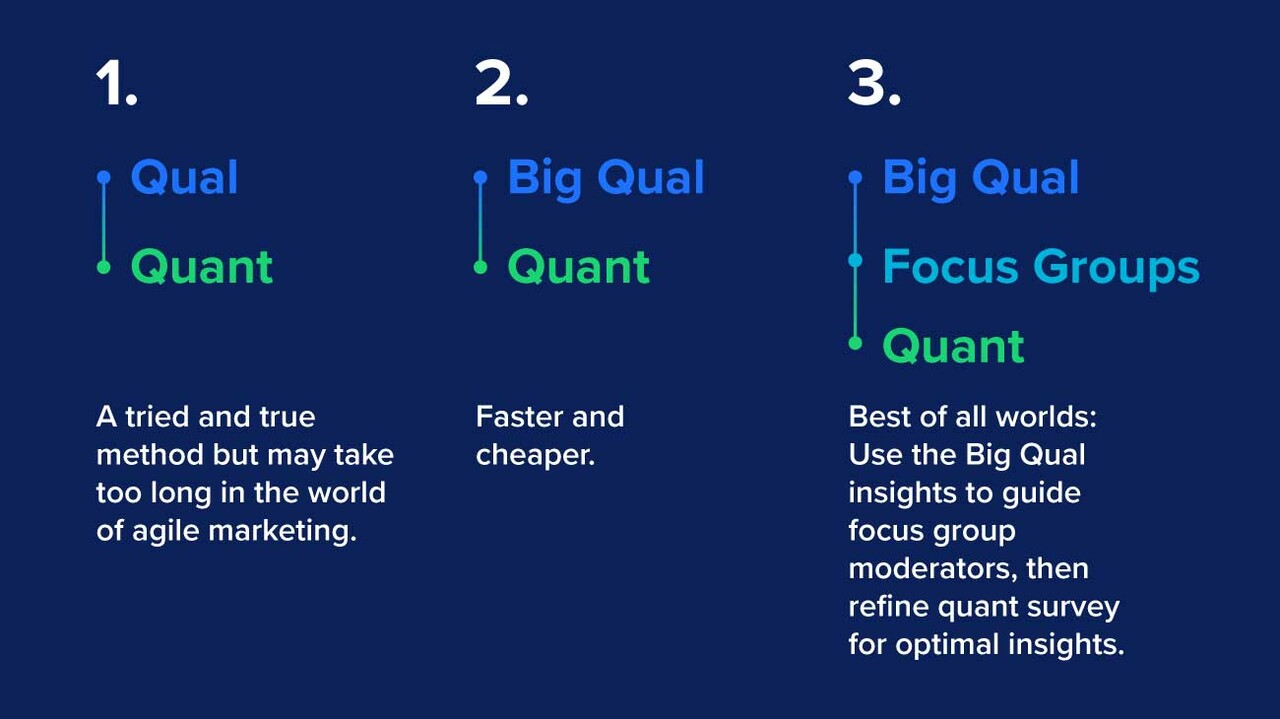Imagine a detective piecing clues together to solve a case; no matter how small, each piece of evidence contributes to the bigger picture. Similarly, market researchers must gather and analyze various data types to uncover valuable insights. Ensuring data quality and extracting rich insights are top priorities in the market research industry. Still, with the pressure to deliver results quickly and efficiently, relying solely on closed-ended survey questions can be tempting. However, an often-overlooked tool in the researcher’s arsenal is the open-ended question. Open-ended survey questions are like critical witnesses in an investigation, providing crucial information that can open the case. When used strategically, they can elevate the quality of your research and provide a deeper understanding of your target audience.
In this article, we’ll discuss the following:
- The power of open-ended questions
- Crafting good open-ended questions
- Harnessing the power of AI for analysis
- The evolution of market research: blending qual and quant
- Embracing open-ends for higher-quality market research
The Power of Open-Ended Questions
In their ESOMAR webinar “Questioning the Status Quo: Embracing Open-Ended Surveys for Faster and Richer Data,” Frank Kelly, Market Research Practice Lead at Virtual Incentives, and Terry Sweeney, Head of North America at Ronin International, shared their insights on the power of open-ended survey questions and the evolving world of market research. They highlighted how blending qualitative and quantitative approaches can lead to more effective and impactful research outcomes.
One of the challenges in market research is ensuring that the data collected is high-quality. Low-quality responses from disengaged or fraudulent participants can skew results and lead to misguided business decisions. Open-ended survey questions can significantly address this challenge.
More on avoiding fraud in market research
Frank shared his research findings on the impact of including a battery of open-ended questions in surveys. He recommends adding six to eight open-ended questions, which should only add one minute to the survey length compared to closed-ended questions alone. Based on his experience, he finds that the ideal approach is to ask a series of related questions, in that way, you can better determine if someone is paying attention rather than just inputting random comments.
When analyzing the responses to these open-ended questions, Frank found a clear distinction between thoughtful, insightful answers and low-quality or nonsensical ones. In his study, 3% of the responses were purely low-quality, while another 8% contained partial low-quality answers but still provided usable data. By examining open-ended responses, researchers can quickly determine which participants are genuinely engaged and providing valuable input.
Compared to closed-ended questions alone, open-ended survey questions offer a more comprehensive view of participant engagement and data quality. In addition, they provide researchers with rich, qualitative data, allowing them to gain deeper insights and a better understanding of the target audience.
What’s the magic number?
Incorporating as few as five open-ended survey questions can help you determine which respondents are less engaged and which are highly engaged.
Tips for Crafting Effective Open-Ended Survey Questions
Researchers must balance open-ended questions with closed-ended questions to maximize their benefits. While closed-ended questions are valuable for collecting specific data points and enabling more straightforward analysis, open-ended survey questions offer depth and detail. It’s important to craft them to yield the most depth and detail possible.
Here are some tips for crafting effective open-ended questions:
- Aim for clarity and simplicity.
- Avoid leading or biased language.
- Allow participants space and freedom to express their thoughts and experiences in their own words.
- Consider the type of information you’re seeking and frame the questions accordingly.
Dos and don’ts
Do
- Tailor questions to uncover desired information
- Use simple, clear language
- Allow adequate space and time for open response
Don’t
- Use leading language
- Allow biased language
- Use vague or confusing language
Harnessing the Power of AI for Efficient Analysis of Open-Ended Survey Questions
As the volume of open-ended responses grows, manually analyzing them can become time-consuming and challenging. Streamlining the analysis process is where AI tools come into play. Advances in natural language processing and machine learning have made it possible to efficiently analyze large sets of open-ended responses, identifying common themes, sentiments, and insights.
Blending Qual and Quant
The traditional divide between qualitative and quantitative research is gradually blurring, giving rise to blended approaches that leverage the strengths of both methodologies. “Big qual” approaches, such as open-ended surveys on DIY platforms, are gaining popularity as faster and more cost-effective alternatives to traditional methods.
Frank suggests a research process that begins with a “big qual” open-ended survey to capture consumers’ language and perspectives. The insights gathered from this initial qual phase can then inform the development of a more targeted focus group moderator’s guide. By starting with a qualitative foundation, researchers can ensure that subsequent quantitative research is grounded in the real experiences and language of the target audience.
This blended approach allows researchers to harness the depth and richness of qualitative insights while still leveraging quantitative methods’ scalability and statistical power. It represents a gradual merging of qualitative and quantitative techniques, facilitated by the emergence of AI tools that streamline the analysis of unstructured data.
Embracing Open-Ends for Higher-Quality Market Research
As a skilled detective combines various investigative techniques to solve a case, market researchers must blend qualitative and quantitative approaches to uncover valuable insights. Open-ended questions are a helpful tool for elevating market research quality and insights.
As Frank and Terry demonstrated, the future of market research lies in the intelligent integration of qualitative and quantitative techniques. By harnessing the power of open-ended questions and embracing blended approaches, researchers can uncover the truth, ensure data quality, and drive better client business decisions. It’s time to put on our detective hats and crack the case of effective market research.

